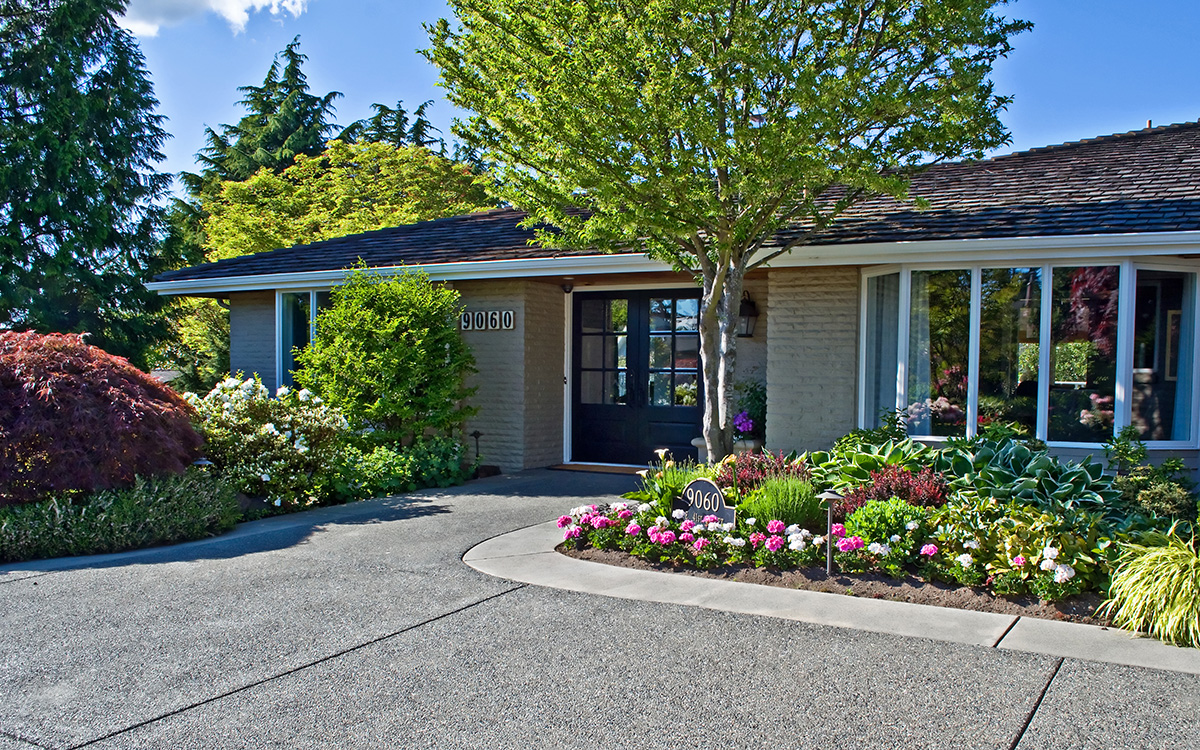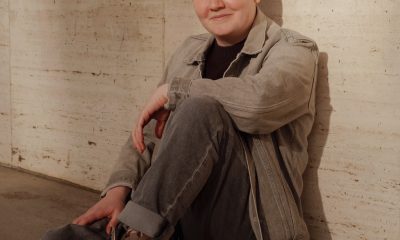Living
A campin’ we will go …
Region offers range of LGBT-welcoming summer kids’ programs


D.C. kids can study art, swimming, dance, sports, technology, cooking, theater and more at the YMCA supper camp program. (Photo courtesy YMCA D.C.)
As the weather gets warmer, summer camps are already preparing for registering campers for their programs. Local camps are offering a wide range of programs from cooking and theater to sports and personal finance to satisfy any child’s interests and needs.
Beauvoir School (3500 Woodley Rd., N.W.) offers summer camp for children ages 3-10. Programs are organized by grade level. Rising pre-kindergarten students are Fireflies, rising kindergarten Blue Jays, rising first and second graders Box Turtles and rising third through fifth graders Brown Bears. Programs include cooking, gymnastics, swimming and Future Millionaires Bootcamp, a program that teaches personal finance, budgeting and how credit cards work. There is also a “Make Your Own Camp” option to combine various programs. There is also before and after camp care available. Prices vary depending on half or full day programs and session dates. For a list of sessions and prices, visit summer.beauvoirschool.org.
Studio Theatre (1501 14th St., N.W.) has an acting conservatory for young actors ages 12-17. Its summer program is an all-day immersion. Morning classes focus on movement, voice and improvisation. Afternoon classes include monologues and scene study from contemporary and classical literature. There are two sessions with a final scene performance at the end of each session. Classes are Monday-Friday from 9 a.m.- 3 p.m. Cost is $865 for the first session and $925 for the second session. For more information, visit studiotheatre.org.
The YMCA in D.C. offers wide range of camp programs for children of all ages. Art, aquatic, dance, sports, technology, cooking, theater and more are available. There are also specialty programs including beauty school, creative writing and gardening. YMCA also offers a day and overnight camp, Camp Letts (4003 Camp Letts Rd., Edgewater, Md.), for a more traditional camp experience. Kayaking, horseback riding and other activities are offered. For more details on specific programs and pricing visit ymcadc.org and campletts.org.
DAR Museum (1776 D., N.W.) offers two history-focused five-day camps this summer. The first is Time Travelers, for children ages 9-12. The program teaches about figures of different cultures and genders who had roles during the American Revolution but are lesser known such as Native Americans, African Americans and European men and women who were poets, spies and more. Campers can be a spy for a day and compose poems with quill and ink as well as take trips to local museums. The second program, From Fiber to Fabric, is for children ages 11-14. It teaches about textiles from raw materials to the final product and teaches sewing among other skills. For more information, visit dar.org.
Circle Yoga (3838 Northampton St., N.W.) has Budding Yogis Summer Camp for children. The camp includes mindful yoga and movement, crafts and creative arts, play at the park, group games, camp songs, relaxation and journaling. Campers ages 4-7 have a half-day camp from 9 a.m.-noon for $250 per week. Full day camp for campers ages 6-12 is from 9 a.m.-3 p.m. and is $365 per week. For more details, visit circleyoga.com.
TIC Summer Camp has locations across the District, Maryland and Virginia area. Its programs focus on science and technology for children ages 7-15. Technology programs include robotics, filmmaking, digital arts, programming and more. There are also sports programs available such as basketball, gymnastics, volleyball, soccer and more. Each session is $825 with four sessions at each location. For more information, visit ticcamp.com.
Adventure Theatre has a summer musical theater camp for grades one to six at its Glen Echo, Md., location and one for grades six-12 at its Rockville, Md. location. Campers have daily rehearsals in dancing, singing and acting using props and costumes. At the end of the program, there will be a performance for family and friends. Grades six-12 can choose from three courses of study in contemporary, Broadway revivals and Golden Age/MGM. Grades one-to-six sessions are $800 and grades six-12 sessions are $1,200. For more information, visit adventuretheatre-mtc.org.
Silver Stars Gymnastics has a Silver Spring (2701 Pittman Dr.) location and a Bowie (14201 Woodcliff Ct.) location. They offer programs for children ages 3 and a half-4, 5-7 and 8-15. There are full-day programs from 8:30 a.m.-4:30 p.m. and half-day programs from 9 a.m.- noon. There are also extended morning programs from 8-8:30 a.m. and extended evenings from 4:30-6 p.m. The programs teach campers gymnastics basics such as cartwheels, jumps, tucks, twists and flips. Tuition ranges from $240-305 with extended sessions adding an additional $25-65. For more details, visit gosilverstars.com.
The Lowell School (1640 Kalmia Rd., N.W.) has summer programs for children rising preschool, rising kindergarten, rising first and second grade, rising third-sixth grade and rising seventh through ninth grade. Younger campers can enjoy programs designed around self discovery and building social skills both outdoors and indoors. Older campers can explore the local city with the “Amazing Race” Game and also other areas with the Get Out! Trips Camp. There are both full-length camp sessions and mini camps. For a full list of sessions and prices, visit lowellschool.org.
Girls Rock! D.C. Camp, an LGBT-run and welcoming camp for budding girl musicians, hasn’t announced its 2015 dates but typically offers July sessions in Washington. Visit girlsrockdc.org for more information.
Georgetown Day School (4530 MacArthur Blvd., N.W.) offers summer camp programs that range from traditional day camp activities to specialty programs such as performing arts, computer programming, science and more. Camps are for children ages 5-18. Specialty camps include Hopper Dance Camp for campers age 5-fifth grade, Science of Rollercoasters for rising third-eighth graders, Dana Tai Soon Burgess Dance Company Summer Intensive for Intermediate to Advanced Dancers for rising sixth-ninth graders, Intro to Discuss Camp for grades six through eight and many more. Prices and session times vary. For a complete list, visit gds.org./campsandclasses.
Green Acres School (11701 Danville Dr., North Bethesda, Md.) has various camp programs including Martial Arts, Kreative Kangaroos for rising pre-kindergarten students, Junior Camp for rising kindergarten through second grade students and Senior Camp for rising third-seventh grade students. Activities for each program vary but include cooking and baking, sports, games, bowling and much more. Pricing and session times also vary. For a complete tuition list and session times, visit greenacres.org.
Although it’s not a traditional summer camp, Rainbow Families D.C. has several events throughout the summer including Adventure Theatre, various Pride events in June, Night Out with the Nationals in July and summer picnic in August as well as a camp weekend retreat in September. Details at rainbowfamiliesdc.org.
Real Estate
Boosting your rental property’s curb appeal
Affordable upgrades to attract and keep tenants happy

In the District of Columbia, the rental market tends to open up significantly during the springtime for several reasons. First, spring brings about a sense of renewal and change, prompting many individuals and families to seek new living arrangements or embark on relocations. Additionally, the warmer weather and longer daylight hours make it more conducive for people to explore housing options, attend viewings, and make decisions about moving. Furthermore, spring often coincides with the end of academic terms, leading to an influx of students and young professionals entering the rental market.
Landlords and property managers also tend to schedule lease renewals or list new vacancies during this time, capitalizing on the increased demand and ensuring a steady turnover of tenants. In the competitive world of rental properties, attracting and retaining quality tenants can be challenging. However, with some strategic upgrades, property owners can significantly enhance their units’ appeal without breaking the bank. From enhancing curb appeal to interior upgrades, here are some practical and cost-effective ideas to make your rental property stand out in the market.
Curb appeal
First impressions matter, and curb appeal plays a crucial role in attracting potential tenants. Simple enhancements like freshening up the exterior paint, adding potted plants or flowers, and ensuring a well-maintained lawn can instantly elevate the property’s appearance. Installing outdoor lighting not only adds charm but also enhances safety and security.
Interior upgrades
Upgrade the kitchen and bathroom fixtures to modern, energy-efficient options. Consider replacing outdated appliances with newer models, which not only appeal to tenants but also contribute to energy savings. Fresh paint and updated flooring can transform the look of a space without a hefty investment. Additionally, replacing worn-out carpets with hardwood or laminate flooring can make the unit more attractive and easier to maintain.
Enhance storage
Maximize storage options by installing built-in shelves, cabinets, or closet organizers. Tenants appreciate ample storage space to keep their belongings organized, contributing to a clutter-free living environment.
Improve lighting
Brighten up the interiors by adding more lighting fixtures or replacing old bulbs with energy-efficient LED lights. Well-lit spaces appear more inviting and spacious, enhancing the overall ambiance of the rental unit.
Upgrade window treatments
Replace outdated curtains or blinds with modern window treatments that allow natural light to filter in while offering privacy. Opt for neutral colors and versatile styles that appeal to a wide range of tastes.
Focus on security
Invest in security features such as deadbolts, window locks, and a reliable alarm system to ensure the safety of your tenants. Feeling secure in their home is a top priority for renters, and these upgrades can provide meaningful, genuine peace of mind.
Enhance outdoor spaces
If your rental property includes outdoor areas like a patio or balcony, consider sprucing them up with comfortable seating, outdoor rugs, and potted plants. Creating inviting outdoor spaces expands the living area and adds value to the rental property.
As landlords, investing in the enhancement of your rental properties is not merely about improving aesthetics; it’s about investing in the satisfaction and well-being of your tenants, and ultimately, in the success of your investment. By implementing these practical and affordable upgrades, you’re not only increasing the desirability of your units but also demonstrating your commitment to providing a high-quality living experience.
These efforts translate into higher tenant retention rates, reduced vacancy periods, and ultimately, a healthier bottom line. Moreover, by prioritizing the comfort, safety, and happiness of your tenants, you’re fostering a sense of community and trust that can lead to long-term relationships and positive referrals. So, let’s embark on this journey of transformation together, turning rental properties into cherished homes and landlords into valued partners in creating exceptional living spaces.
Scott Bloom is owner and Senior Property Manager of Columbia Property Management. For more information and resources, visit ColumbiaPM.com.
Real Estate
Real estate agents work hard for that commission
Despite recent headlines, buyers and sellers benefit from our expertise

With there being a lot of noise in the media lately as I am sure you have read and heard headlines like “Gone are the days of the 6% commission” and “End of the good days of Realtors,” etc., I wanted to re-run a very short article of the long laundry list of things that well versed real estate agents bring to the table to earn that seldom 6% commission. It’s typically split in half and it has always been negotiable).
As a real estate professional you will go on listing appointments and buyer meetings to not only attempt to gain business but in doing so you also educate the general public on what it is that we as real estate professionals do. I know what you’re thinking – and if you’ve seen my photo before you wouldn’t be wrong to assume that I am cast in “Selling DC” as the lead villain. I am just waiting for that phone call! But in all seriousness, when I sit down to come up with a list of things to prove to prospective clients the value in working with me as their real estate professional, I am pretty blown away at the items and qualities that a trusted professional representing you in a real estate transaction is responsible for managing a myriad of tasks, including but not limiting to the following:
• Have a pulse on the marketplace to truly understand exactly what is happening from a buying and selling standpoint while also understanding the economic side of things – not just looking at interest rates. Why are rates where they are? What employers are laying off and could cause an influx of inventory? What are the trends for individuals moving IN or OUT of an area looking like? Forecasting the marketplace of all things that truly affect real estate is vital.
• Soft Skills – these are the skills often considered as customer service skills. The ability to be approachable by all types of people and ensure that you are open to receive information. Also – when telling you bad news – it’s important to ensure that it is done in a manner in which you, the receiver, will be pleasantly receptive.
• Pre-market vendors – not only are real estate professionals expected to market your home for sale or locate a home for you to purchase, we are also expected to have a list of pre-market vendors to which you can use for your lending needs, home inspection, title work, any fluffing and buffing needed pre market for the sale of your home such as a contractor, painter, landscaper etc. We have a book of extremely well vetted vendors that either I personally have used or past clients have used that can assist with your needs. This beats Googling for hours and accidentally choosing the wrong contractor. Section A of the pre-market vendor list includes those in which we real estate professionals use for marketing materials for your property – we will use the best photographers, have floor plans drawn for your property, video, staging, catering for brokers opens and the list goes on. Again – this is a well vetted list that we have worked on for years and done all of the heavy lifting and had those uncomfortable conversations when things are not properly executed – so you don’t have to.
• On Market Tasks – these are the tasks that most clients are unaware that we do. Oftentimes when a listing is on market – folks think that I am just cruising around in my convertible buying nice things. However I am in fact going around checking each listing on market to ensure that they are clean, the booties are replaced, marketing materials are stocked, light bulbs are all working, staging looks crisp and the list truly goes on. That of course, doesn’t include the tasks we do to properly market the property such as weekly email blasts, reaching out several times to follow up with showing agents to get their feedback, check the market to see what our competition looks like, what’s under contract and why, and again…..I could go on. Needless to say the most important and time consuming tasks are those that are done when the property is on market.
• “Contract to close” management – the term contract to close is pretty much what it sounds like – it’s what happens from the time we go under contract until we reach the closing finish line and you have those keys. Once a trusted real estate professional has fiercely negotiated on your behalf as a buyer, the fun starts. Again pops up this vendor list – helping guide you though selection of a home inspector, termite inspector, etc. for the inspections. A title attorney is needed (depending on your jurisdiction) and any other vendors for quotes like renovations, etc., that you might want done to the property. Once the inspection is completed and we go through possible re-negotiations then we must ensure that the lender has the documents needed from you completed in order to have the appraisal done to prove the value of the home you are under contract for. Now we are getting into the weeds – but once we are on the other side of things and the appraisal comes back at value and the loan is clear to close then we are at the finish line to your new home.
A similar story can be told if you are selling your home. The appraisal is a very important part of the checklist as that is the value in which your home is worth. The appraiser is a third party that neither the buyer, seller, lender or myself have any allegiance to. I do, however, have the duty to educate said appraiser on why I chose the listing price and how I came up with that value.
• Post-market vendors. As mentioned before, a real estate professional should have a book of well vetted vendors from which to choose. Looking at the list of vendors now that we are on the other side of the table – I can provide a cleaning person, HVAC contractor, someone to repair the sprinkler system, a dog walker, the best caterers and bakery in town. Further down the road I am able to provide a wonderful wealth manager who can tell you what to do with that piece of real estate you purchased some time ago and we could go on for days.
While you are fully entitled to not use a real estate agent during your real estate transaction, I do believe that it is well within the realm of possibilities to say that without one there would be loose ends not completely tied up, things mismanaged and possible delays that could cost real cash. All of that aside, it is also such a truly wonderful experience to work alongside a trusted professional that at the end of the transaction becomes a new friend and family member. Real estate professionals love what they do, they love real estate and people and sheepherding you through the home buying or selling process is what it’s all about to us.
Justin Noble is a Realtor with Sotheby’s international Realty licensed in D.C., Maryland, and Delaware for your DMV and Delaware Beach needs. Specializing in first-time homebuyers, development and new construction as well as estate sales, Justin is a well-versed agent, highly regarded, and provides white glove service at every price point. Reach him at 202-503-4243, [email protected] or BurnsandNoble.com.
Real Estate
Do you need title insurance?
Facilitating smoother and more efficient real estate transactions

A title search is an examination of public records to determine the legal ownership of a property and identify any claims or liens against it. This comprehensive investigation delves into deeds, mortgages, court records, tax records, and other documents related to the property’s history. The objective is to verify that the seller has the legal right to transfer ownership of the property and that there are no undisclosed issues that could cloud the title.
I would surmise that most buyers have never read their title report or policy and I confess that I was one of them until 2005, when I bought a house in San Diego. While I was “in escrow,” my agent presented me with a title report. My first reaction was, “What do I do with this?” He replied, “review it and sign indicating that it is acceptable.” I had no idea what to look for, since I had always had title companies to rely on for interpreting the results. Thankfully, it was a clean report with no liens on it other than the mortgage the seller would be paying off at settlement.
Here, only if anything is amiss will the title attorney notify the agents and advise what the parties need to do to satisfy any conditions that could prevent them from closing. Otherwise, you won’t see the report up front.
Why are title searches important?
- They verify the seller’s legal right to transfer ownership of the property, providing assurance to the buyer that they are purchasing a legitimate asset.
- They identify any outstanding liens, mortgages, or other encumbrances that could affect the property’s value or the buyer’s ability to obtain financing.
- A title insurance policy provides coverage for losses arising from title defects such as disputes, undisclosed easements, forgery, or fraud, offering peace of mind to both buyers and lenders.
The process starts with the retrieval of documents from various sources, including county clerk offices, tax assessor’s offices, and court records.
The records are then inspected to trace the chain of ownership and identify any potential issues. The title examiner verifies the accuracy of legal descriptions, checks for inconsistencies or errors, and identifies any red flags that may indicate title defects.
If found, resolution of issues or discrepancies, such as unpaid taxes, outstanding liens, or boundary disputes must be addressed before the transaction can proceed. This may involve negotiating with creditors to satisfy outstanding debts, requesting more information from sellers, and resolving legal disputes.
Once complete, the firm will issue a title report on which to base a title policy. The buyers will receive a copy at settlement. The report provides a detailed summary of the property’s ownership history, any encumbrances or defects found during the search, and recommendations for mitigating risks.
Title insurance for the lender is required, but buyers often ask whether they need owner’s title insurance coverage too. I always recommend buying an owner’s policy. If a buyer chooses not to, then only the lender is protected from any claims revealed after the issuance of the title report. For a one-time fee, an owner’s policy protects your interest in the property and that of any heirs from future claims until the house is ultimately sold.
For example, I attended a settlement with a buyer who was purchasing a rowhouse. A woman who had power of attorney to sign for the seller was also there and, because he was overseas, the actual seller was on speaker phone to address his concerns or ask any questions.
The closing agent began reading the settlement statement aloud to indicate what was being deducted from the seller’s proceeds. The seller was fine with the amount shown for the remainder of his first mortgage, but when she read out the amount of the second mortgage, the seller, now agitated, asked, “What second mortgage?”
It then became clear that the woman, the owner’s former fiancée, had used her power of attorney to obtain a second mortgage after the title search had been done. Thanks to the title companies’ involvement, the seller was able to post a bond for the missing funds to allow settlement to proceed while he took on a legal battle with his former fiancée. Don’t try this at home, kids.
By uncovering potential issues early in the process, title searches help facilitate smoother and more efficient real estate transactions by resolving issues upfront, ensuring a seamless transfer of property ownership. But nobody knows when great Uncle Bob or your former tenant may show up with a claim to the house. You’ll need your owner’s title policy to have someone on your side.
Valerie M. Blake is a licensed Associate Broker in D.C., Maryland, and Virginia with RLAH Real Estate / @properties. Call or text her at 202-246-8602, email her via DCHomeQuest.com, or follow her on Facebook at TheRealst8ofAffairs.
-

 Africa4 days ago
Africa4 days agoCongolese lawmaker introduces anti-homosexuality bill
-

 District of Columbia19 hours ago
District of Columbia19 hours agoReenactment of first gay rights picket at White House draws interest of tourists
-

 World4 days ago
World4 days agoOut in the World: LGBTQ news from Europe and Asia
-

 Arizona23 hours ago
Arizona23 hours agoAriz. governor vetoes anti-transgender, Ten Commandments bill












